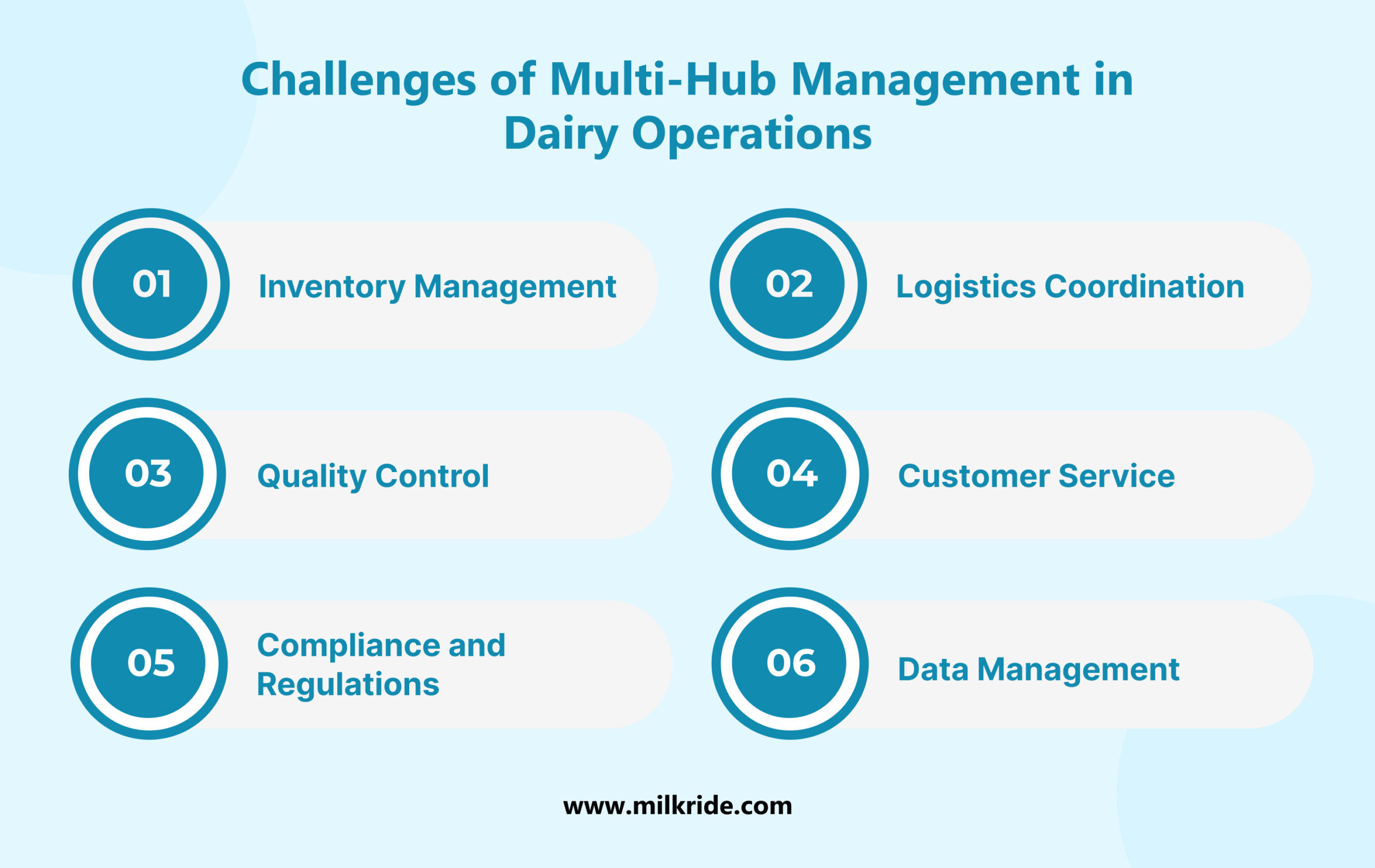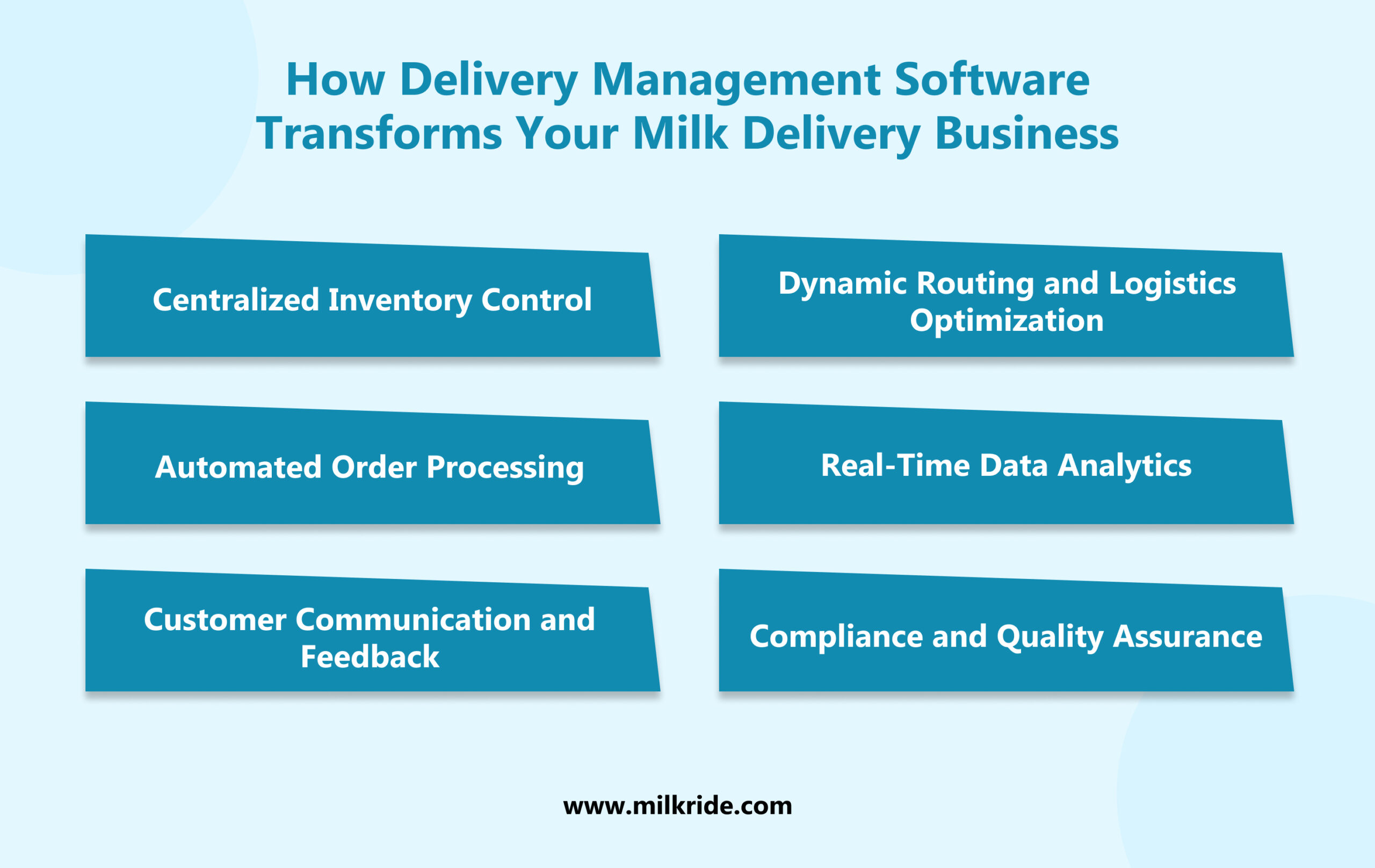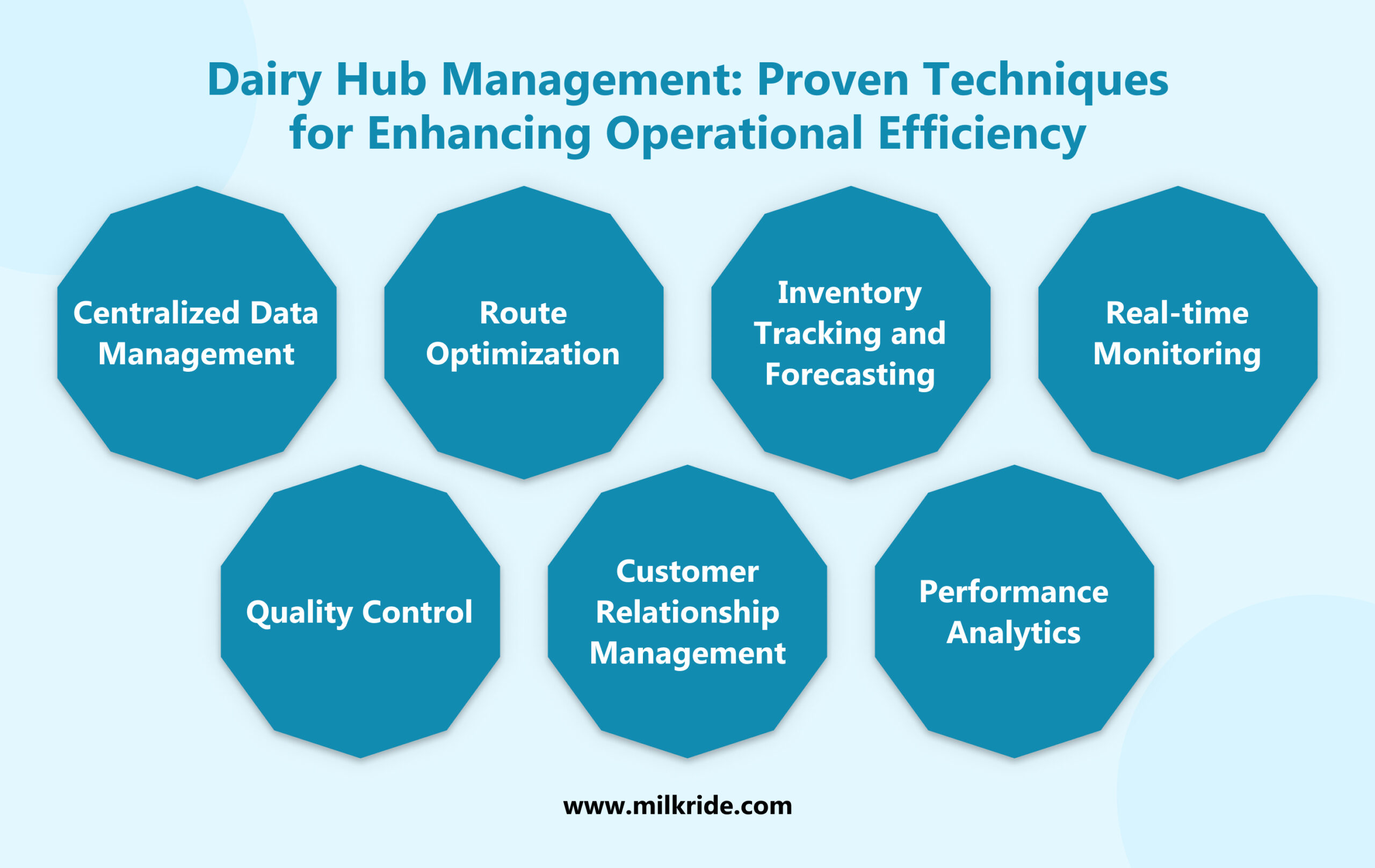Dairy Management Software for Multiple-Hub Milk Distribution

Table of Contents
Introduction
In the dairy business, multiple milk distribution hubs are essential because they serve as key points for the efficient distribution of milk products to various locations. These hubs act as central nodes where milk is collected, processed, and dispatched to meet the demands of consumers. Managing multiple hubs involves intricate logistics, coordination, and strategic planning to ensure timely deliveries, maintain product quality, and optimize operational efficiency.
By strategically locating these hubs, dairy businesses can streamline their supply chain, reduce transportation costs, and enhance customer satisfaction by ensuring fresh and timely deliveries. The effective management of multiple milk distribution hubs is essential for dairy businesses looking to scale their operations, meet growing market demands, and stay competitive in the dynamic dairy industry landscape.
Challenges of Multi-Hub Management in Dairy Operations

A) Inventory Management:
Ensuring optimal stock levels across multiple hubs while preventing stock outs or overstocking is crucial. This involves real-time tracking of inventory, demand forecasting, and efficient replenishment strategies.
B) Logistics Coordination:
Coordinating the movement of products between hubs, managing delivery schedules, and optimizing transportation routes are essential for timely and cost-effective distribution.
C) Quality Control:
Maintaining consistent product quality and freshness across all hubs is paramount. This includes implementing quality assurance processes, monitoring storage conditions, and minimizing transit times.
D) Customer Service:
Providing excellent customer service requires seamless communication and coordination between hubs. This includes handling customer inquiries, managing returns or exchanges, and ensuring on-time deliveries.
E) Compliance and Regulations:
Adhering to regulatory requirements and industry standards across multiple locations adds another layer of complexity. This includes food safety regulations, labeling requirements, and environmental compliance.
6) Data Management:
Centralizing data from multiple hubs, including sales data, inventory levels, and customer feedback, is essential for informed decision-making and continuous improvement.
How Delivery Management Software Transforms Your Milk Delivery Business

A) Centralized Inventory Control:
- Utilize a centralized inventory management system to track stock levels, monitor product movement between hubs, and prevent stock outs or overstocking.
- This ensures optimal inventory levels across all hubs, minimizing storage costs and improving order fulfillment.
B) Dynamic Routing and Logistics Optimization:
- Implement route optimization algorithms and real-time tracking systems to create efficient delivery routes.
- Consider factors like traffic conditions, delivery schedules, and customer preferences to minimize delivery times and reduce transportation costs.
C) Automated Order Processing:
- Streamline order processing through automation, from order placement to fulfillment.
- Use automated systems to generate picking lists, allocate inventory from the nearest hub, and schedule deliveries, reducing manual errors and improving order accuracy.
D) Real-Time Data Analytics:
- Leverage data analytics tools to monitor key performance metrics, such as inventory turnover, delivery times, and customer satisfaction levels.
- Use actionable insights to identify areas for improvement, optimize resource allocation, and make data-driven decisions.
E) Customer Communication and Feedback:
- Maintain transparent communication channels with customers regarding order status, delivery updates, and promotions.
- Gather customer feedback regularly to identify pain points, address issues promptly, and continuously improve service quality.
F) Compliance and Quality Assurance:
- Ensure compliance with regulatory requirements and industry standards across all hubs.
- Implement robust quality assurance processes to maintain product quality and safety standards, adhering to food safety regulations and labeling requirements.
Dairy Hub Management: Proven Techniques for Enhancing Operational Efficiency

A) Centralized Data Management:
- Implement a centralized data management system within the dairy management software.
- This allows all hubs to access and update real-time data regarding milk inventory, production schedules, delivery routes, and customer orders.
- Centralized data ensures consistency and accuracy across all hubs.
B) Route Optimization:
- Use route optimization algorithms integrated into the software to plan and optimize delivery routes for each hub.
- Consider factors such as distance, traffic conditions, delivery time windows, and vehicle capacity to maximize efficiency and reduce delivery costs.
C) Inventory Tracking and Forecasting:
- Utilize inventory tracking features to monitor milk stock levels at each hub.
- Implement forecasting algorithms that analyze historical data, seasonal trends, and customer demand to predict future inventory needs accurately.
- This helps prevent stockouts and minimize excess inventory.
D) Real-time Monitoring:
- Incorporate real-time monitoring tools that provide live updates on hub operations, including milk production, packaging, and distribution.
- Alerts and notifications can flag any operational issues or deviations from planned schedules, enabling quick corrective actions.
E) Quality Control:
- Implement robust quality control measures within the software to ensure the freshness and quality of milk products at every stage of the supply chain.
- This includes temperature monitoring during storage and transportation, adherence to hygiene standards, and regular quality inspections.
F) Customer Relationship Management (CRM):
- Integrate CRM functionalities to manage customer interactions, orders, preferences, and feedback across all hubs.
- Personalized communication and efficient order processing enhance customer satisfaction and loyalty.
G) Performance Analytics:
- Utilize performance analytics and reporting tools to track key performance indicators (KPIs) such as delivery accuracy, on-time delivery rates, inventory turnover, and cost per delivery.
- Analyzing these metrics helps identify areas for improvement and optimize hub operations for better efficiency and cost-effectiveness.
Conclusion
In conclusion, the effective management of multiple milk distribution hubs is crucial for dairy businesses looking to streamline their operations, enhance customer satisfaction, and drive profitability. By integrating dairy management software into their operations, businesses can overcome the complexities of hub management and leverage data-driven insights to optimize their processes.
The adoption of technology-driven solutions like Milkride’s milk delivery software enables dairy companies to automate tasks, improve traceability, and make informed decisions, ultimately leading to increased operational efficiency and customer loyalty and all about milk delivery solutions.
Milkride is a premier provider of milk delivery solutions, offering dairy businesses a comprehensive software package to streamline operations, optimize routes, and enhance customer satisfaction. With features like real-time tracking, automated notifications, and inventory management, Milkride empowers businesses to efficiently manage multiple milk distribution hubs and drive profitability in the competitive dairy industry.
Maximize growth opportunities for your dairy business with Milkride’s custom milk delivery solutions. Contact us for a free demo!
